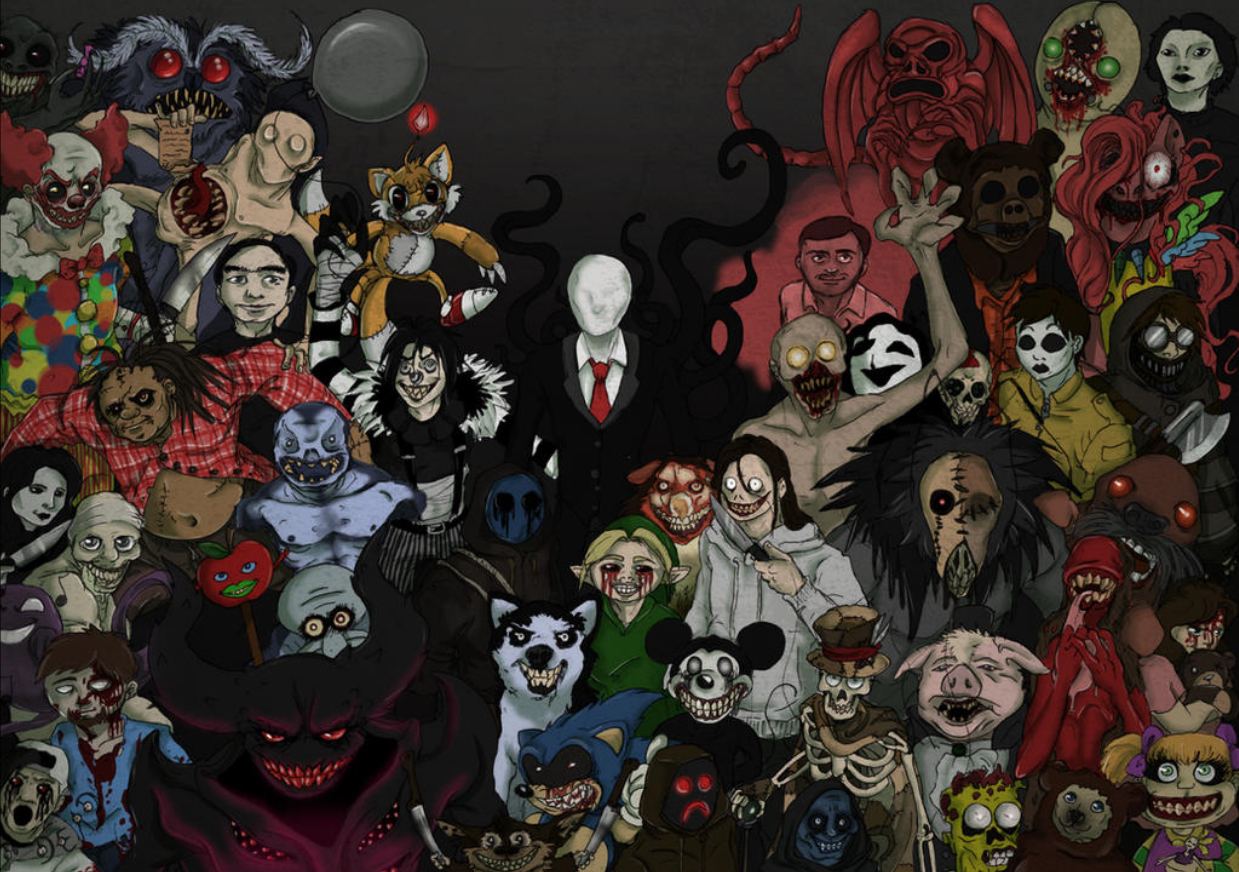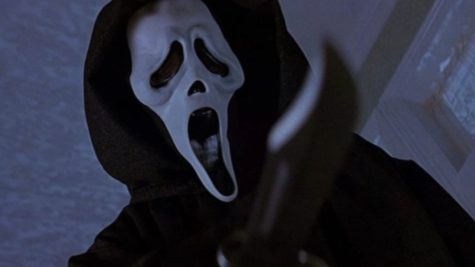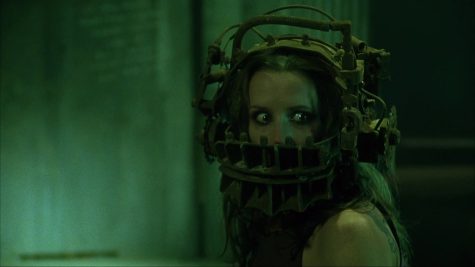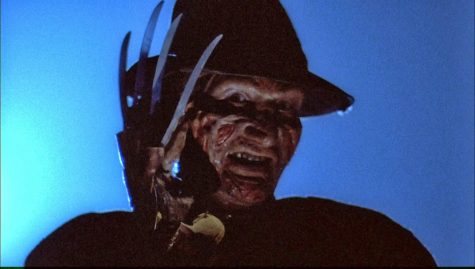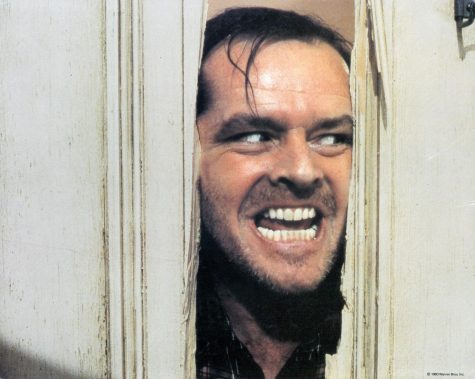A Web of Horror
April 13, 2023
A History of Internet Horror
——
To anyone who grew up on the internet, names such as “Jeff the Killer” or “Slenderman” may ring a bell or even invoke some feeling of eerie nostalgia. Those names are usually associated with Creepypastas. For those who are unaware, a Creepypasta is a horror story written for and uploaded on the internet. The Creepypasta fandom dominated the internet horror genre in spaces like Tumblr and YouTube from the early ages of the web, all the way until the mid 2010’s. Many young children had stumbled upon these stories and iconic images at a young age, possibly either traumatizing them, desensitizing them to horror, or a bit of both.
One of the most infamous stories on the internet–often dubbed the first “Creepypasta”–is “Ted the Caver”, which narrates a man named Ted and his friend traversing a cave where they have to chip away at a hole to get through. Their blog post says they will update once they reach the other side, yet to this day there has still been no update. As mentioned before, stories like “Jeff the Killer” and “Slenderman” were also very popular Creepypastas, however they did not appear until the later 2000’s.
Rewinding a bit, internet horror dates all the way back to the 1990’s and the early days of the internet. The earliest example of horror on the internet would be chain emails and ARGs (Alternate Reality Games), which blend digital and real-world interaction as a platform for puzzle solving and storytelling. Many of these ARGs or chain emails would involve some level of horror or anxiety. Alongside that, the late 90’s and early 2000’s brought the era of “shock sites” such as rotten.com and LiveLeak, which showcased real gore, horror, and overall disturbing imagery and footage.
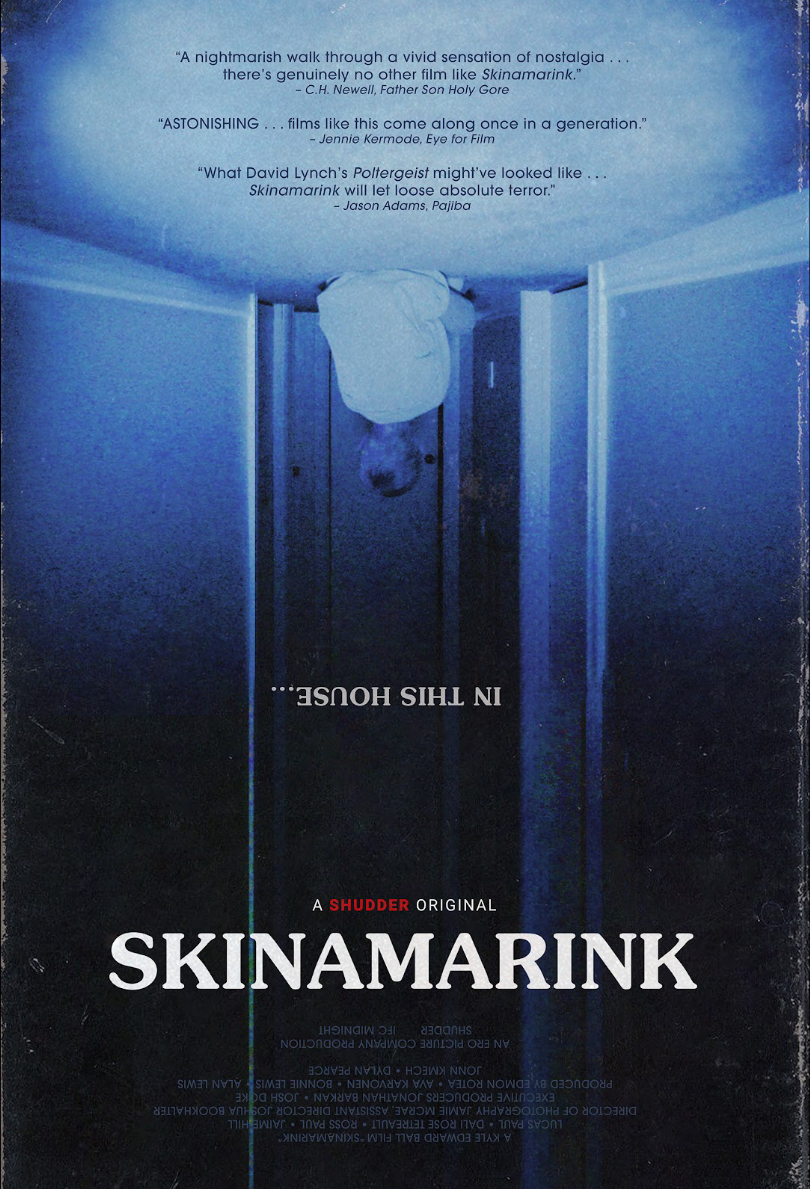
The 2010’s was the golden age of YouTube “Let’s Plays”, with some of the most popular horror and shock games being Amnesia, Five Nights at Freddy’s, and Happy Wheels. Among these there was also the introduction of jumpscare videos back in the mid 2000’s, such as but not limited to, the Scary Maze game and the “Ghost Car” video. Other iconic horror videos include the “Salad Fingers” series, “Username 666”, “Dining Room or There is Nothing”, “I Feel Fantastic”, and “Hi walter ! i got a new gf today !” which can all be found on YouTube.
Nowadays, internet horror can be seen in the form of what has been dubbed “Analog Horror”. This style of writing or, more commonly, video focuses on the viewer’s emotions rather than scare tactics. Popular examples of Analog Horror include the movie Skinamarink, The Mandela Catalog, and The Walten Files. The new wave of what may be known as “nostalgic” horror for the younger generation would be content like 3:00am videos and Dark Web content. These videos are supposed to appeal to children with the inclusion of popular characters from TV or video games. These types of videos are often more goofy rather than scary, but will still definitely have an impact on the future generation just as the original internet horror did.
A timeline of famous YouTube Analog Horror series “The Walten Files” by Martin Walls
Infographic created by Piper Benning
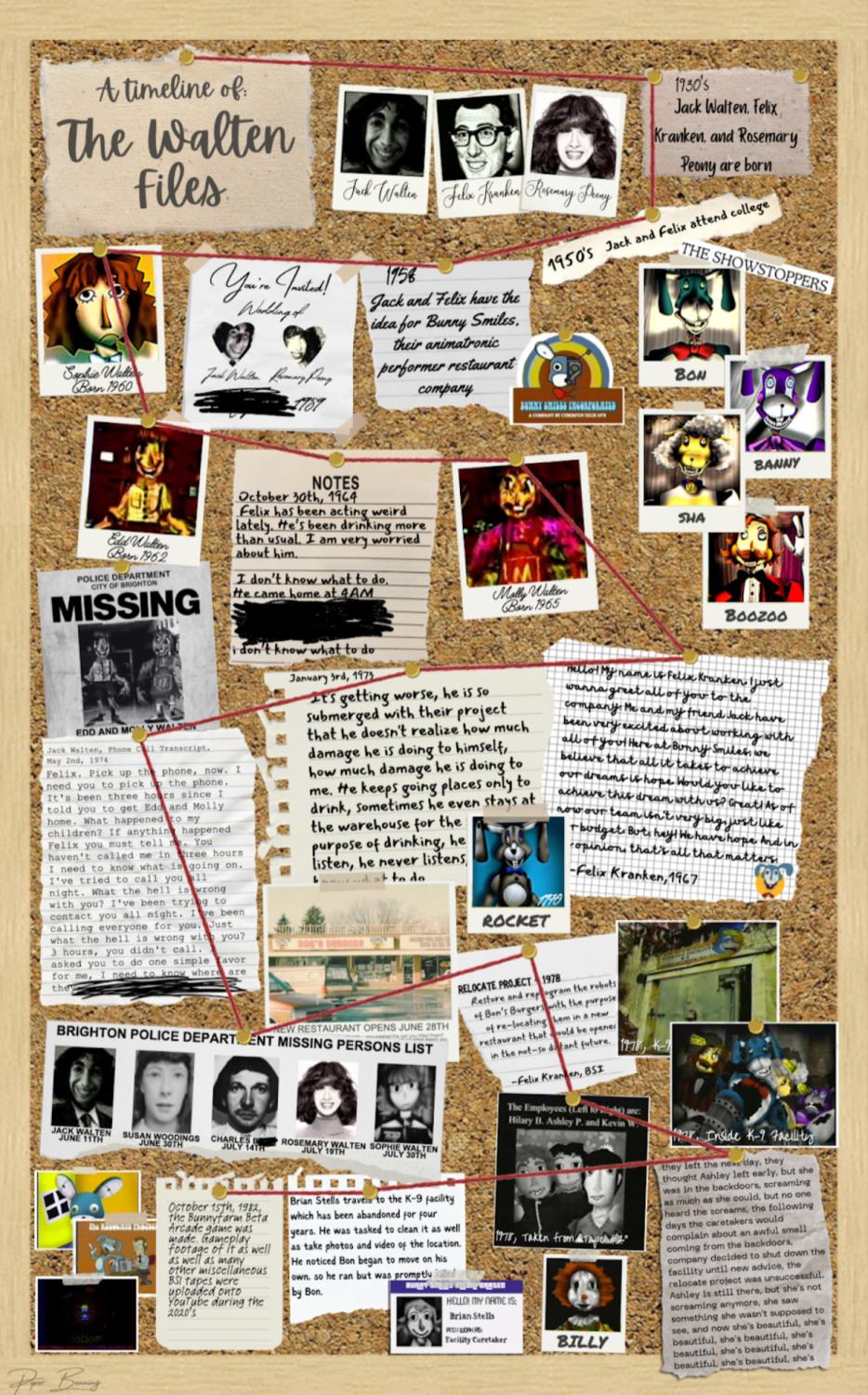
——
Creepypasta Review: The Russian Sleep Experiment
The early days of the internet were home to many different types of horror content and stories. These nostalgic stories invoked fear and anxiety in us as kids, but as adults looking back on them, we can’t help but cringe at the bad writing and odd storytelling. One of the most infamous stories is known as “The Russian Sleep Experiment”. It describes the supposedly real timeline of a research team testing a gas on POWs that would keep them awake for days on end. This resulted in the prisoners turning rabid and animalistic, becoming violent towards the guards and doctors, and killing some of them as well as each other.
Despite the true horror of a World War 2 inspired experiment, the storytelling is a bit questionable. While it is surely convincing to a younger audience who doesn’t know better, revisiting this story and others on the site leaves us feeling more nostalgic rather than uneasy. The writing is vague and non-descriptive, as if trying to remember a dream and retelling it to a friend. A more effective method the author could have chosen was writing up fake medical records or reports to further convince the reader of its authenticity.

——
——
Horror Highlight: The SCP Foundation
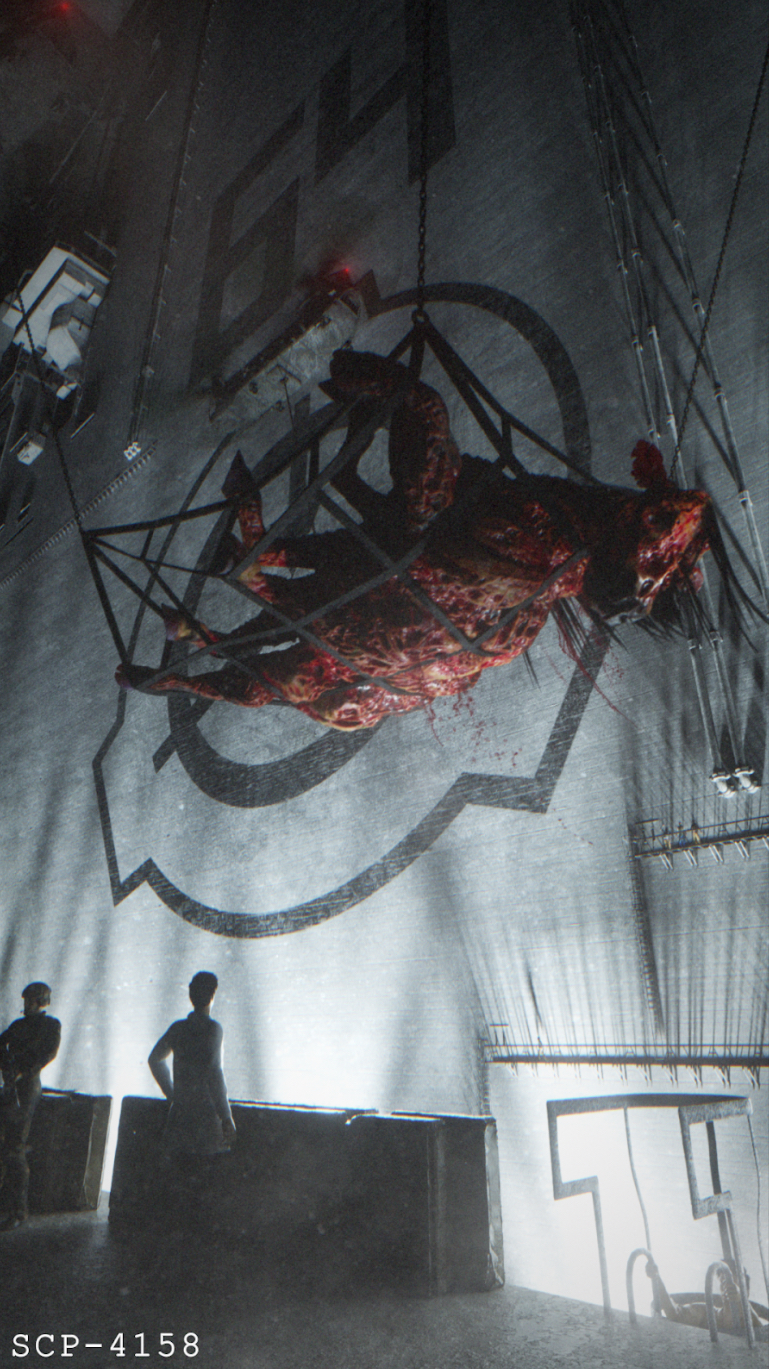
Secure, Contain, Protect. That is the motto of The SCP Foundation. As the acronym suggests, the foundation was created to contain supernatural, or otherwise anomalous hazards. The website documents files on uncanny creatures or items that are open for the majority of the public to see. As the website says, they hold “items and critters that do not follow the rules of nature as we know them”. This website, however, is 100% fictitious. The true story of the SCP Foundation is that it was built upon a community of creative storytellers looking for a platform for their imaginativeness.
SCPs are categorized under numbers 1 through, currently, 7999. The stories have to go through moderation approval to be added to the website. The creatures, people, and items are further identified by their “object class”, the three main ones being “Safe”, “Euclid”, and “Keter”. Safe means that the containment of this anomaly is easy, Euclid means that containment is slightly difficult, and Keter means that said anomaly is dangerous. Every SCP’s page has a description of how to contain said anomaly, its danger level, and brief descriptions of it. Some writers have gone as far as to add extra photos and text to give further depth to their creation.

